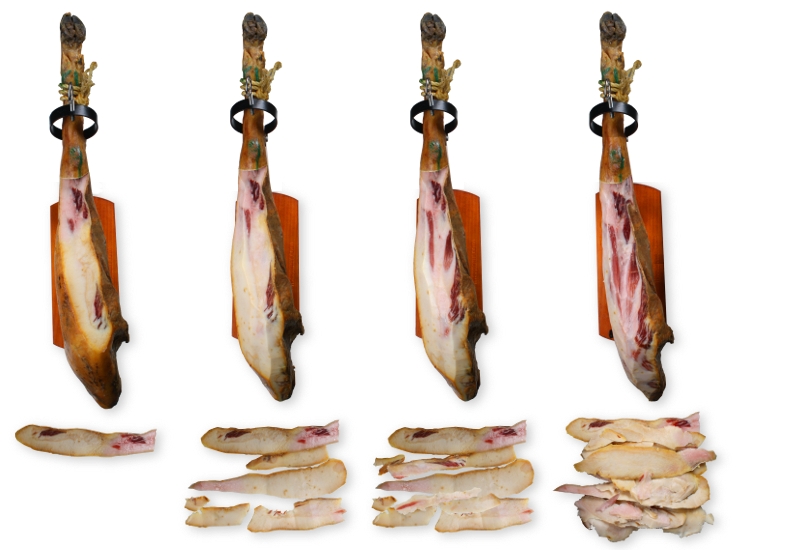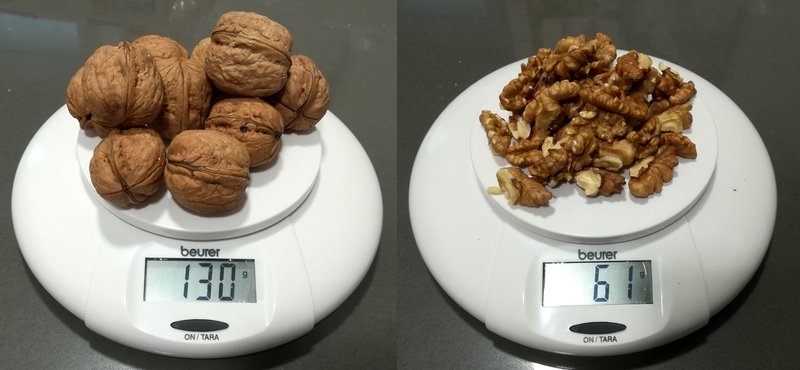You start cutting into a Pata Negra ham and all you seem to get is fat and more fat. You look at the plate and calculate that there’s already about a kilo there… £50 or £60 destined straight for the bin. It’s not a good start.

At last, the first streaks of meat appear. Their glossy shine gets your saliva glands working, and when you finally eat the first slices you start seeing things differently.
But is there really too much fat in acorn-reared ham? Has it always been like this?
Why does Pata Negra Ham contain more fat now than it used to?
There are 3 reasons behind the increase in external fat in acorn-reared (bellota) Iberico ham:
- Purity of the breed: The current trend is to use the more pure-bred animals for the high-end range. They produce better quality meat and enjoy more substantial official protection (only hams from 100% Iberian pigs can be called Pata Negra). But these pigs are characterized by significant fat stores in the outer part of the muscle, while the intramuscular streaks are much finer than in Duroc pigs.
- Longer curing times: The widespread consumption of Iberico ham is a very recent phenomenon – since just 15 or 20 years ago. As José Bello Gutiérrez says in his book Jamón curado: Aspectos científicos y tecnológicos [Cured Ham: Scientific and Technological Aspects], during the last quarter of the 20th century it was more common to eat Serrano ham from white pigs nourished on fodder and bred deliberately to minimize fat. It wasn’t just a question of price. People also thought it was healthier, even if it meant reducing the organoleptic quality of the product. As a consequence, the ham we normally ate during the 20th century was cured for no more than 1 or 2 years and was very lean.
- Salt reduction: Consumers (especially in Europe) want products with low salt content. It improves the flavour and is much healthier. But when salt levels are reduced, other elements need to be introduced to protect the ham from organisms that could make it go off. For example, improving sanitary conditions and ensuring cold chain guarantees (crucial during the first months of curing).Several studies (for example Gou, 1998) have shown that fat slows down the penetration of salt into the middle of the ham because salt diffuses less well than through fat than lean meat. So, the more fatty tissue the ham has, the longer it will take for the salt to reach the meat. Unfortunately, most of the fat will be inedible because it will have oxidized and turned rancid over the years.Finally, the ham’s own sweat helps: the external fat impregnates all the surface pores as it melts, forming a protective film.
Moreover, as we explained in a previous article, the fat masks the salty flavour, so the more fat there is, the less we can taste the salt.
Other products with a similar yield
Acorn-reared ham yields roughly 40-45% meat. That means that of a £500 ham, around £300 will end up in the bin. That might seem like a lot, but it’s similar to the yield of other common consumer products like sole (40%), mussels (35%) or nuts (45%).

Do big hams contain a higher proportion of meat?
Yes, they do. That’s why restaurants tend to prefer larger hams of more than 8 or 9 kg.
The reason is that the weight of the bone, the hoof, the skin and the external fat is basically the same for large and small hams. Larger hams are from pigs that put on more weight, but their underlying skeleton is very similar.
But be careful: sometimes that extra weight isn’t because the pig was allowed to eat acorns for longer, but because it was fed on fodder. That means the product is lower quality. In the industry this is known as remate (finishing) and, as you’d expect, it is not permitted by the current law regulating Ibérico ham (formerly it was permitted for hams classified as Recebo, meaning fed on fodder and acorns).
